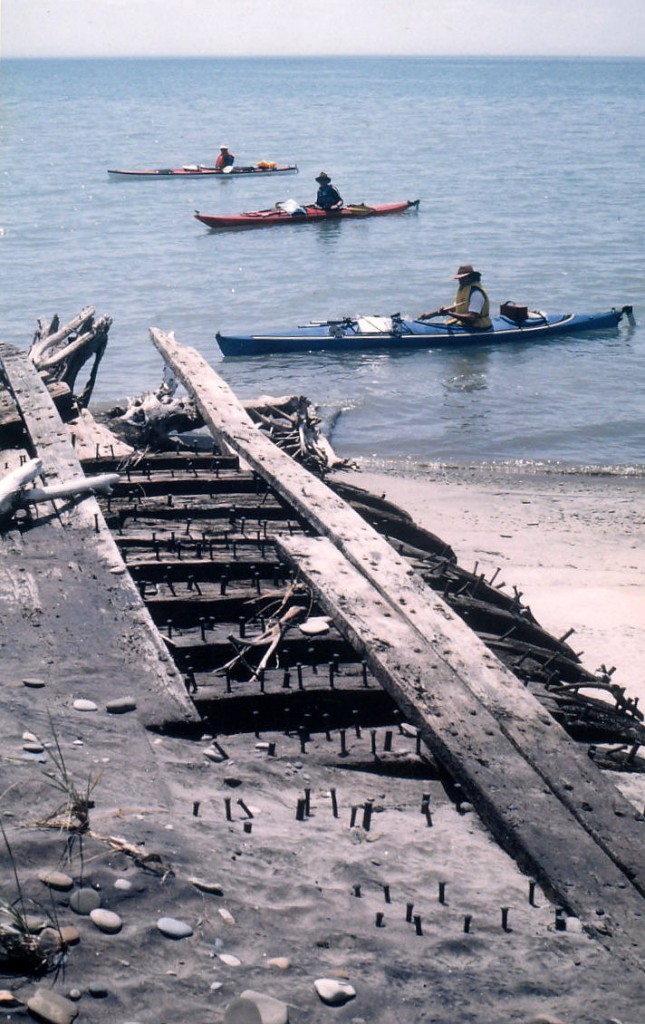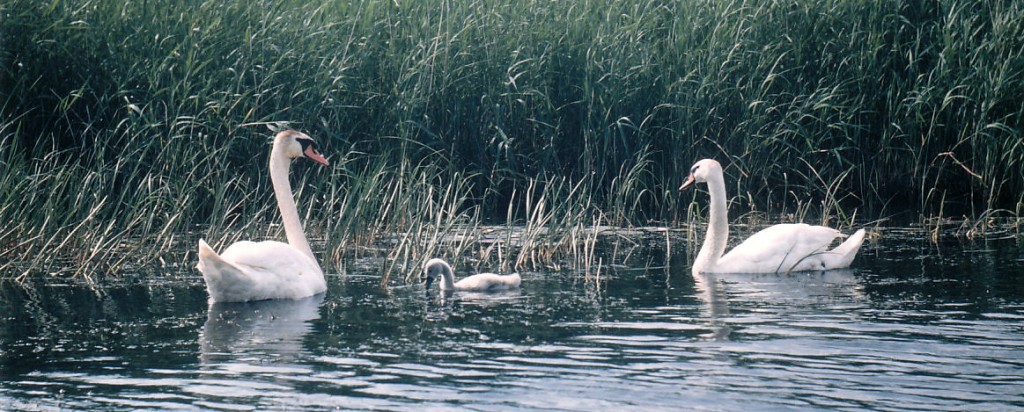Article: Robert Aucoin
Photographs: Sandy Richardson
The following report of a GLSKA trip held in July 1990 originally appeared in the Autumn 1990 (Vol. 2, No. 3) issue of Qayaq. It is another in a series of articles from our first quarter century that we are reprinting as GLSKA marks its 25th anniversary. Robert Aucoin was a member of the GLSKA Board from 1991 through 1994; he served as club president in 1993 and 1994.
As the person responsible for memberships, I have noted that not many GLSKA members make use of Lake Erie. This trip report may change that for some of you. In early July, six GLSKA members set off on a two-day trip around Long Point led by Jim Coles,
Long Point, which is about 32 kilometres long, is the longest sandspit on the Great Lakes. This is of interest in itself; but what really makes this point, located in Canada’s industrial heartland, worth a visit is that it is one of our most important and fragile natural areas. This is quite an ironic contrast.
Most of Long Point is a designated wildlife area famous for its migrating waterfowl which stop over in the spring and fall to rest and feed in the marshes and sheltered bays. Also monarch butterflies migrate through Long Point in September. Obviously, the migration seasons are the best times to visit Long Point, but it is also an interesting place during the summer months.
What makes paddling around Long Point really fascinating is the feeling that you have entered some far off and exotic foreign land. Sand dunes are extensive on Long Point, and this combined with its scattered woodlands makes it quite unique. It is not something most people would associate with southern Ontario.

Long Point is more suitable for day trips than overnight excursions; the reason being that there is no camping allowed on the point except at its base. You can’t even pull up onto the beach in the wildlife area, as we can attest to. When we pulled up for lunch, one of the park rangers who was patrolling the beach on an all terrain vehicle promptly reminded us of our offence. There is a provincial park located at the base of the point, and it can be used as a base to venture out and explore the point. Luckily for our group though, we were granted permission to camp on a strip of land near the tip of the point which is owned by the Ministry of Natural Resources. Jim Coles was able to arrange this since he works for the MNR. (Ah! the benefits of connections.)
This enabled us to round the point. You would have to be some sort of masochist to round the point in a day; even two days is a strenuous trip. We all knew that it would be a hard trip, and the locals were surprised by our intentions, but rounding the point was very satisfying for all of us.
The southern shore of Long Point is all sand beach which is quite colourful in some areas, and which is the site of several ship wrecks. Numerous ships over the years have been caught up on the sand bars. Many of them though have been covered over by the shifting sand. We were fortunate enough to find a few of them though, which can be difficult as many look like driftwood.
Pottohawk is a point on one of the islands near Long Point. The island is about 2 to 3 kilometres long and its shoreline was covered with boats. I have never seen such a conglomeration of boats in one spot. Not even in a marina! All of this just a few kilometres from one of Canada’s most fragile wildlife areas.
Another irony was the Long Point Company. They own a significant portion of the spit, and are a private association of wealthy sportsmen, i.e. hunters. The land that they own was sold to the company in 1866 by the government. Although this seems ironic, the company has proved beneficial to Long Point’s existence as a wildlife area. In the mid-19th century there was no concern about conservation and both wildlife and wildlife habitats were being threatened. The Long Point Company installed and enforced strict regulations, bringing an end to the slaughter of wildlife and its habitat.
All in all, the trip was very worthwhile. Even though Long Point may not be a place that you would think of as being a wilderness area, due to its surroundings, it really is unique and worth a visit. Something I am sure all those on the trip would attest to.

